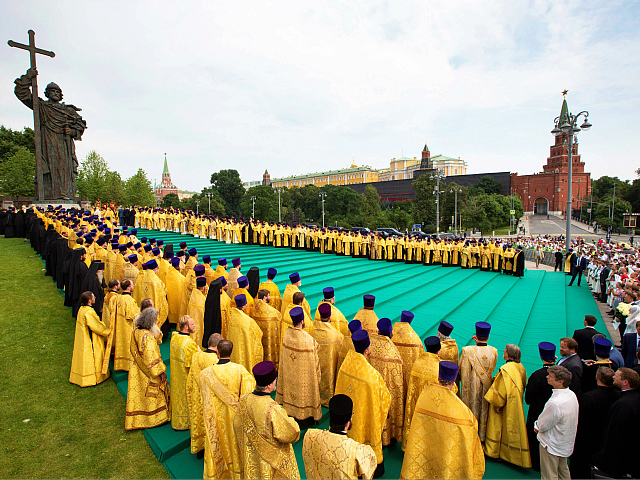July 27, 2018
MY CORNER by Boyd
Cathey
Major Report on
Russian Meddling and Hacking; and Ilana Mercer Column:
Who You Gonna
Believe, Your Eyes or What Government Apparatchiks Tell You?
Friends,
The
two major reasons I adduced for this are:
(1) their nefarious and very serious political involvement in the ongoing attempt to
overthrow a democratically-elected American president, and
(2) their increasing slipshod and incompetent work performance.
Either
one of these accusations, proven to be true, would be cause for reforming or shutting
down the agencies and reconstituting them.
I submit that both accusations are not only true, but demand attention if
this country will survive (although the lot of bought-and-paid-for by the Deep
State political types in Congress recoil at such critically needed reform).
Today
I pass on two items, both of which continue themes I mentioned on July 24.
First,
there is an excellent commentary by my friend and columnist Ilana Mercer which illustrates
both the verifiable incompetence of our Intel agencies and their craven
ideological politicization. The second and longer item is a recapitulation of a report first issued
one year ago by the VIPS group [Veteran Intelligence Professionals for Sanity],
an organization of mostly former or retired intelligence agents and experts
which strongly questions the dubious “data” that our current Intel community
has been putting out about Russian election meddling and hacking (and which has
been very conveniently employed to further the “Russian collusion/Russian
meddling” narrative).
I
urge you to read and save both items.
Continually,
I find it remarkable just how dominant the Deep State “swamp” really is: there
may be a couple of dozen or so House members of our elected Congress who are
actually free of its tentacles, and in the Senate, save for Rand Paul, I can’t
think of one.
The
axiom runs—“we get the elected representatives we deserve.” If that be true,
then things are far worse than even the most pessimistic observer has
envisioned. Not only must the “swamp” must be drained, it must be bulldozed….
-------------------------------
Doubting the Intelligence of the Intelligence
Community
Peter Strzok, the disgraced and
disgraceful Federal Bureau of Investigation official, is the very definition of
a slimy swamp creature. Strzok twitched, grimaced and ranted his way to infamy
during a joint hearing of the House Oversight and Judiciary Committees, on July
12.
In no way had he failed to
discharge his professional unbiased obligation to the public, asserted Strzok.
He had merely expressed the hope that
“the American population would not elect somebody demonstrating such horrible,
disgusting behavior.”
But we did not elect YOU, Mr.
Strzok. We elected Mr. Trump.
Strzok is the youthful face of
the venerated “Intelligence Community,” itself part of the sprawling political
machine that makes up the D.C. comitatus, now writhing like a fire breathing mythical monster against
President Donald Trump.
Smug, self-satisfied, cheating
creature that he is, Strzok can’t take responsibility for his own misconduct,
and blames …
Russia for dividing America. In the largely progressive bureau, moreover, Agent
Strzok is neither underling nor outlier, for that matter.
As Ann Coulter observed, the
FBI is not the FBI of J. Edgar Hoover.
Haney was a heroic,
soft-spoken, demure employee at the Department of Homeland Security. Agents
like him are often fired if they don’t get with the program. He didn’t.
Haney’s method and the authentic intelligence he
mined and developed might have stopped the likes of the San Bernardino mass
murderers and many others. Instead, his higher-ups in the “Intelligence
Community” made Haney and his data disappear.
Post Haney, the FBI failed to
adequately screen and stop Syed Farook and blushing bride Tashfeen Malik.
A “blind bootlicking faith in
spooks” is certainly unwarranted and may even be foolish.
What of odious individuals like
former FBI Director Andrew McCabe, and his predecessor, James Comey, now openly
campaigning for the Democrats? Are these leaders outliers in the “Intelligence
Community”?
As Peter Strzok might say to
his paramour in a private tweet, “Who ya gonna believe, the Intelligence
Community or your own lying eyes?” The Bureau in particular and the IC cabal,
in general, appear to be dominated by the likes of the dull-witted Mr. Strzok.
Similarly, it’s hard to think
of a more partisan operator than John O. Brennan—he ran the CIA under President
Obama. True to type, he cast a vote for Communist Party USA, back in 1976, when
the current Russia monomania would have been justified. Brennan has dubbed
President Trump a traitor for having dared to doubt people like himself.
The very embodiment of the
Surveillance State at its worst is Michael V. Hayden. Hayden has moved
seamlessly from the National Security Agency and the CIA to CNN where he beats
up on Trump.
The former Bush employee
hollered treason: “One of the most disgraceful performances of an American
president in front of a Russian leader,” Hayden inveighed. Not only had POTUS
dared to explore the possibility of a truce with Russia, which is a formidable
nuclear power; but the president had the temerity to express a smidgen of
skepticism about a community littered with spooks like … Mr. Hayden.
As one wag noted, not unreasonably, ours is “a
highly-politicized intelligence community, infiltrated over decades by cadres
of Deep State operatives and sleeper agents, whose goal is to bring down this
presidency.”
Pray tell, since when does the
Deep State—FBI, CIA, DIA, NSA, DNI, (Director
of National Intelligence), on and on—represent, or stand for, the American
People? The president, conversely, actually got the support of at least 60
million Americans.
That’s a LOT of support.
Outside the Beltway, ordinary
folks—Deplorables, if you will—have to sympathize with the president’s initial
and honest appraisal of the Intelligence Community’s collective intelligence.
This is the community that has
sent us into quite a few recreational, hobby wars.
And this is the community that
regularly intercepts but fails to surveil and stop the likes of mass murderers
Syed Farook and bride Tashfeen Malik. Or, Orlando nightclub killer Omar Mateen,
whose father the Bureau saw fit to hire as an informant. The
same “community” has invited the Muslim Public Affairs Council and the
Arab-American Institute to help shape FBI counterterrorism training.
The FBI might not be very
intelligent at all.
About the quality of that
intelligence, consider: On August 3, 2016, as the mad media were amping up
their Russia monomania, a frenzied BuzzFeed—it calls itself a news org—reported
that “the Russian foreign ministry had wired nearly $30,000 through a
Kremlin-backed bank to its embassy in Washington, DC.”
Intercepted by American
intelligence, the Russian wire stipulated that
the funds were meant “to finance the election campaign of 2016.”
Was this not “meddling in our election”
or what? Did we finally have irrefutable evidence of Kremlin culpability? The
FBI certainly thought so.
“Worse still, this was only one
of 60 transfers that were being scrutinized by the FBI,” wrote the Economist, in
November of 2017. “Similar transfers were made to other countries.”
As it transpired, the money was
wired from the Kremlin to embassies the world over. Its purpose? Russia was
preparing to hold parliamentary elections in 2016 and had sent funds to Russian
embassies “to organize the polling for Russian expatriates [living abroad].”
While it did update its Fake
News factoids, Buzzfeed felt no compunction whatsoever to remove the erroneous
item or publicly question their sources in the unimpeachable “Intelligence
Community.”
Most news media are just not as
inquisitive as … President Trump.
----------------------
Memo to the
President Ahead of Monday’s Summit
BRIEFING FOR: The
President
FROM: Ray McGovern, former CIA briefer of The President’s Daily
Brief, and William Binney, former Technical Director at NSA
SUBJECT: Info Your Summit Briefers May Have Missed
We reproduce below one of our most recent
articles on “Russia-Gate,” which, in turn, draws from our Veteran Intelligence
Professionals for Sanity Memorandum to you of July 24,
2017.
At the time of that Memorandum we wrote:
“Forensic
studies of “Russian hacking” into Democratic National Committee computers last
year reveal that on July 5, 2016, data was leaked (not hacked) by
a person with physical access to DNC computer. After examining metadata from
the “Guccifer 2.0” July 5, 2016 intrusion into the DNC server, independent
cyber investigators have concluded that an insider copied DNC data onto an
external storage device.
Key
among the findings of the independent forensic investigations is the conclusion
that the DNC data was copied onto a storage device at a speed that far
exceeds an Internet capability for a remote hack.”
“We do
not know who or what the murky Guccifer 2.0 is. You may wish to ask the FBI,”
we wrote. However, we now have forensic evidence that shows the data provided
by Guccifer 2.0 had been manipulated and is a fabrication.
We also
discussed CIA’s cyber-tool “Marble Framework,” which can hack into computers,
“obfuscate” who hacked, and leave behind incriminating, telltale signs in
Russian; and we noted that this capability had been employed during 2016. As we
pointed out, Putin himself made an unmistakable reference to this “obfuscating”
tool during an interview with Megan Kelly.
Our
article of June 7, 2018, explains further:
“Still
Waiting for Evidence of a Russian Hack”
If you
are wondering why so little is heard these days of accusations that Russia
hacked into the U.S. election in 2016, it could be because those charges could
not withstand close scrutiny. It could also be
because special counsel Robert Mueller appears to have never bothered to
investigate what was once the central alleged crime in Russia-gate as no one
associated with WikiLeaks has ever been questioned by his team.
Veteran
Intelligence Professionals for Sanity – including two “alumni” who were former
National Security Agency technical directors – have long since concluded that
Julian Assange did not acquire what he called the “emails related to Hillary
Clinton” via a “hack” by the Russians or anyone else. They found, rather, that
he got them from someone with physical access to Democratic National Committee
computers who copied the material onto an external storage device – probably a
thumb drive. In December 2016 VIPS explained this in some detail
in an open Memorandum to President Barack Obama.
On
January 18, 2017 President Obama admitted that the
“conclusions” of US intelligence regarding how the alleged Russian hacking got
to WikiLeaks were “inconclusive.” Even the vapid FBI/CIA/NSA “Intelligence
Community Assessment of Russian Activities and Intentions in Recent US
Elections” of January 6, 2017, which tried to blame Russian President Vladimir
Putin for election interference, contained no direct evidence
of Russian involvement. That did not prevent the “handpicked” authors of that
poor excuse for intelligence analysis from expressing “high confidence” that
Russian intelligence “relayed material it acquired from the Democratic National
Committee … to WikiLeaks.” Handpicked analysts, of course, say what they are
handpicked to say.
Never
mind. The FBI/CIA/NSA “assessment” became Bible truth for partisans like Rep.
Adam Schiff (D-CA), ranking member of the House Intelligence Committee, who was
among the first off the blocks to blame Russia for interfering to help Trump.
It simply could not have been that Hillary Clinton was quite capable of
snatching defeat out of victory all by herself. No, it had to have been the
Russians.
Five
days into the Trump presidency, McGovern had a chance to challenge Schiff personally on the
gaping disconnect between the Russians and WikiLeaks. Schiff still “can’t share
the evidence” with me … or with anyone else, because it does not exist.
It was
on June 12, 2016, just six weeks before the Democratic National Convention,
that Assange announced the pending publication of “emails related to Hillary
Clinton,” throwing the Clinton campaign into panic mode, since the emails would
document strong bias in favor of Clinton and successful attempts to sabotage
the campaign of Bernie Sanders. When the emails were published on July 22, just
three days before the convention began, the campaign decided to create what we
call a Magnificent Diversion, drawing attention away from the substance of the
emails by blaming Russia for their release.
Clinton’s
PR chief Jennifer Palmieri later admitted that
she golf-carted around to various media outlets at the convention with
instructions “to get the press to focus on something even we found difficult to
process: the prospect that Russia had not only hacked and stolen emails from
the DNC, but that it had done so to help Donald Trump and hurt Hillary
Clinton.” The diversion worked like a charm. Mainstream media kept shouting
“The Russians did it,” and gave little, if any, play to the DNC skullduggery
revealed in the emails themselves. And like Brer’ Fox, Bernie didn’t say
nothin’.
Meanwhile,
highly sophisticated technical experts, were hard at work fabricating “forensic
facts” to “prove” the Russians did it. Here’s how it played out:
June
12, 2016: Assange announces that WikiLeaks is about to publish
“emails related to Hillary Clinton.”
June
14, 2016: DNC contractor CrowdStrike, (with a dubious professional
record and multiple conflicts of interest) announces that malware has been
found on the DNC server and claims there is evidence it was injected by
Russians.
June
15, 2016: “Guccifer 2.0” affirms the DNC statement; claims
responsibility for the “hack;” claims to be a WikiLeaks source; and posts a
document that the forensics show was synthetically tainted with “Russian fingerprints.”
The
June 12, 14, & 15 timing was hardly coincidence. Rather, it was the start
of a preemptive move to associate Russia with anything WikiLeaks might have
been about to publish and to “show” that it came from a Russian hack.
Enter
Independent Investigators
A year
ago independent cyber-investigators completed the kind of forensic work that,
for reasons best known to then-FBI Director James Comey, neither he nor the
“handpicked analysts” who wrote the Jan. 6, 2017 assessment bothered to do. The
independent investigators found verifiable evidence from metadata found in the
record of an alleged Russian hack of July 5, 2016 showing that the “hack” that
day of the DNC by Guccifer 2.0 was not a hack, by Russia or anyone else.
Rather
it originated with a copy (onto an external storage device – a thumb drive, for
example) by an insider – the same process used by the DNC
insider/leaker before June 12, 2016 for an altogether different purpose. (Once
the metadata was found and the “fluid dynamics” principle of physics applied,
this was not difficult to disprove the validity of the
claim that Russia was responsible.)
One of
these independent investigators publishing under the name of The Forensicator
on May 31 published new evidence that the Guccifer
2.0 persona uploaded a document from the West Coast of the United States, and
not from Russia.
In our
July 24, 2017 Memorandum to President Donald Trump we stated, “We do not know who or
what the murky Guccifer 2.0 is. You may wish to ask the FBI.”
Our
July 24 Memorandum continued: “Mr. President, the disclosure described below
may be related. Even if it is not, it is something we think you should be made
aware of in this general connection. On March 7, 2017, WikiLeaks began to
publish a trove of original CIA documents that WikiLeaks labeled ‘Vault 7.’
WikiLeaks said it got the trove from a current or former CIA contractor and
described it as comparable in scale and significance to the information Edward
Snowden gave to reporters in 2013.
“No one
has challenged the authenticity of the original documents of Vault 7, which
disclosed a vast array of cyber warfare tools developed, probably with help
from NSA, by CIA’s Engineering Development Group. That Group was part of the
sprawling CIA Directorate of Digital Innovation – a growth industry established
by John Brennan in 2015. [ (VIPswarned President Obama of
some of the dangers of that basic CIA reorganization at the time.]
Marbled
“Scarcely
imaginable digital tools – that can take control of your car and make it race
over 100 mph, for example, or can enable remote spying through a TV – were
described and duly reported in the New York Times and other media throughout
March. But the Vault 7, part 3 release on March 31 that exposed the “Marble
Framework” program apparently was judged too delicate to qualify as ‘news fit
to print’ and was kept out of the Times at the time, and has
never been mentioned since.
“The
Washington Post’s Ellen Nakashima, it seems, ‘did not get the memo’ in time.
Her March 31 article bore the catching
(and accurate) headline: ‘WikiLeaks’ latest release of CIA cyber-tools could
blow the cover on agency hacking operations.’
“The
WikiLeaks release indicated that Marble was designed for flexible and
easy-to-use ‘obfuscation,’ and that Marble source code includes a
“de-obfuscator” to reverse CIA text obfuscation.
“More
important, the CIA reportedly used Marble during 2016. In her Washington
Post report, Nakashima left that
out, but did include another significant point made by WikiLeaks; namely, that
the obfuscation tool could be used to conduct a ‘forensic attribution double
game’ or false-flag operation because it included test samples in Chinese,
Russian, Korean, Arabic and Farsi.”
A few weeks
later William Binney, a former NSA technical director, and Ray McGovern commented on Vault 7 Marble,
and were able to get a shortened op-ed version published in The
Baltimore Sun.
The
CIA’s reaction to the WikiLeaks disclosure of the Marble Framework tool was
neuralgic. Then Director Mike Pompeo lashed out two weeks later, calling
Assange and his associates “demons,” and insisting; “It’s time to call out
WikiLeaks for what it really is, a non-state hostile intelligence service,
often abetted by state actors like Russia.”
Our
July 24 Memorandum continued: “Mr. President, we do not know if CIA’s Marble
Framework, or tools like it, played some kind of role in the campaign to blame
Russia for hacking the DNC. Nor do we know how candid the denizens of CIA’s
Digital Innovation Directorate have been with you and with Director Pompeo.
These are areas that might profit from early White House review. [ President
Trump then directed Pompeo to invite Binney, one of the authors of the July 24,
2017 VIPs Memorandum to the President, to discuss all this. Binney and Pompeo
spent an hour together at CIA Headquarters on October 24, 2017, during which
Binney briefed Pompeo with his customary straightforwardness. ]
“We
also do not know if you have discussed cyber issues in any detail with
President Putin. In his interview with NBC’s Megyn Kelly he seemed quite
willing – perhaps even eager – to address issues related to the kind of cyber
tools revealed in the Vault 7 disclosures, if only to indicate he has been
briefed on them. Putin pointed out that today’s technology enables hacking to
be ‘masked and camouflaged to an extent that no one can understand the origin’
[of the hack] … And, vice versa, it is possible to set up any entity or any
individual that everyone will think that they are the exact source of that
attack.
“‘Hackers
may be anywhere,’ he said. ‘There may be hackers, by the way, in the United
States who very craftily and professionally passed the buck to Russia. Can’t
you imagine such a scenario? … I can.’
New
attention has been drawn to these issues after McGovern discussed them in a
widely published 16-minute interview last Friday.
In view
of the highly politicized environment surrounding these issues, we believe we
must append here the same notice that VIPs felt compelled to add to our key
Memorandum of July 24, 2017:
“Full
Disclosure: Over recent decades the ethos of our intelligence profession has
eroded in the public mind to the point that agenda-free analysis is deemed well-nigh
impossible. Thus, we add this disclaimer, which applies to everything we in
VIPs say and do: We have no political agenda; our sole purpose is to spread
truth around and, when necessary, hold to account our former intelligence
colleagues.
“We
speak and write without fear or favor. Consequently, any resemblance between
what we say and what presidents, politicians and pundits say is purely
coincidental.” The fact we find it is necessary to include that reminder speaks
volumes about these highly politicized times.
Ray McGovern works with
Tell the Word, a publishing arm of the ecumenical Church of the Saviour in
inner-city Washington. His 27-year career as a CIA analyst includes serving as
Chief of the Soviet Foreign Policy Branch and preparer/briefer of the
President’s Daily Brief. He is co-founder of Veteran Intelligence Professionals
for Sanity (VIPS). William Binney worked for NSA for 36 years, retiring in 2001
as the technical director of world military and geopolitical analysis and
reporting; he created many of the collection systems still used by NSA.
Reprinted with permission from Consortium News.
 MARK RALSTON/AFP/Getty Images
MARK RALSTON/AFP/Getty Images

